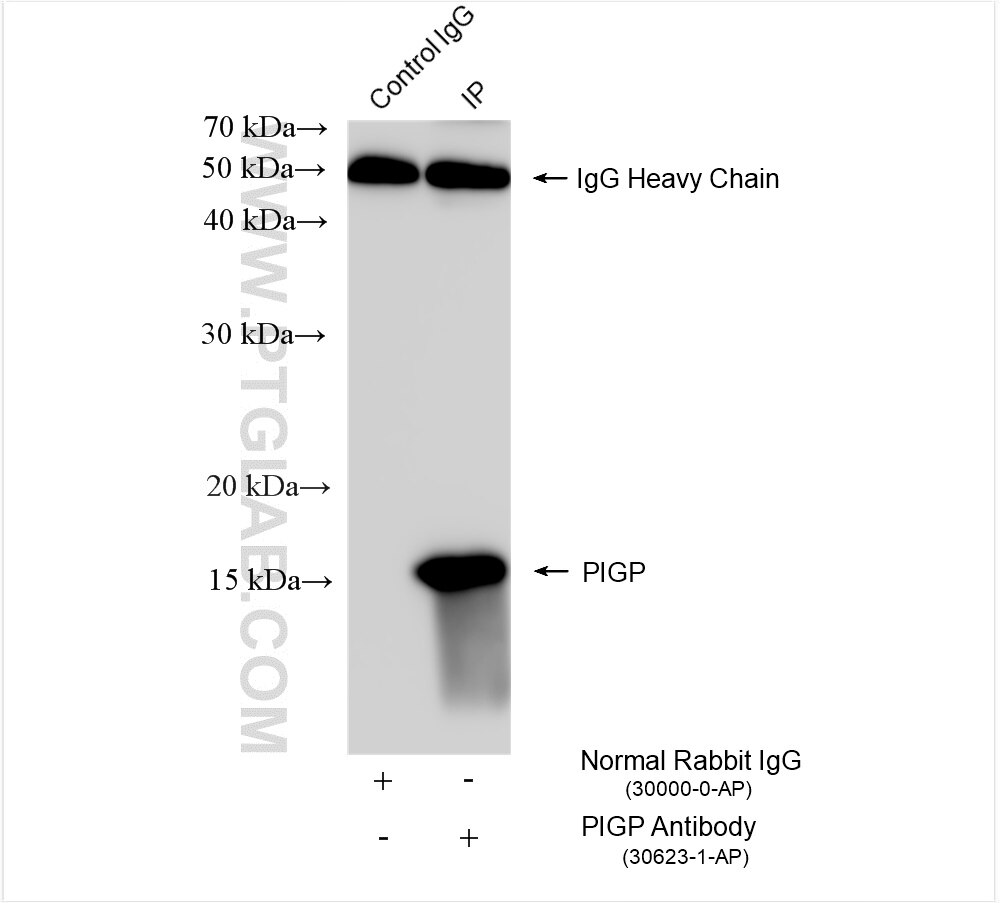PIGP Polyklonaler Antikörper
PIGP Polyklonal Antikörper für IP, ELISA
Wirt / Isotyp
Kaninchen / IgG
Getestete Reaktivität
human
Anwendung
IP, ELISA
Konjugation
Unkonjugiert
Kat-Nr. : 30623-1-AP
Synonyme
Geprüfte Anwendungen
| Erfolgreiche IP | U-87 MG-Zellen |
Empfohlene Verdünnung
| Anwendung | Verdünnung |
|---|---|
| Immunpräzipitation (IP) | IP : 0.5-4.0 ug for 1.0-3.0 mg of total protein lysate |
| It is recommended that this reagent should be titrated in each testing system to obtain optimal results. | |
| Sample-dependent, check data in validation data gallery | |
Produktinformation
30623-1-AP bindet in IP, ELISA PIGP und zeigt Reaktivität mit human
| Getestete Reaktivität | human |
| Wirt / Isotyp | Kaninchen / IgG |
| Klonalität | Polyklonal |
| Typ | Antikörper |
| Immunogen | PIGP fusion protein Ag29498 |
| Vollständiger Name | phosphatidylinositol glycan anchor biosynthesis, class P |
| Berechnetes Molekulargewicht | 18 kDa |
| Beobachtetes Molekulargewicht | 15~18 kDa |
| GenBank-Zugangsnummer | BC005180 |
| Gene symbol | PIGP |
| Gene ID (NCBI) | 51227 |
| Konjugation | Unkonjugiert |
| Form | Liquid |
| Reinigungsmethode | Antigen-Affinitätsreinigung |
| Lagerungspuffer | PBS with 0.02% sodium azide and 50% glycerol |
| Lagerungsbedingungen | Bei -20°C lagern. Nach dem Versand ein Jahr lang stabil Aliquotieren ist bei -20oC Lagerung nicht notwendig. 20ul Größen enthalten 0,1% BSA. |
Hintergrundinformationen
Phosphatidylinositol glycan anchor biosynthesis, class P (PIGP), a member of the large glycosylphosphatidylinositol (GPI) anchor biosynthesis gene family, encodes a subunit of the enzyme that catalyzes the first step of GPI anchor biosynthesis (PMID: 28334793). Mutations in the PIGP gene can lead to a variety of disorders, including developmental delay, intellectual disability, seizures, dysmorphic features, and diverse congenital anomalies.
Protokolle
| PRODUKTSPEZIFISCHE PROTOKOLLE | |
|---|---|
| IP protocol for PIGP antibody 30623-1-AP | Protokoll herunterladen |
| STANDARD-PROTOKOLLE | |
|---|---|
| Klicken Sie hier, um unsere Standardprotokolle anzuzeigen |


